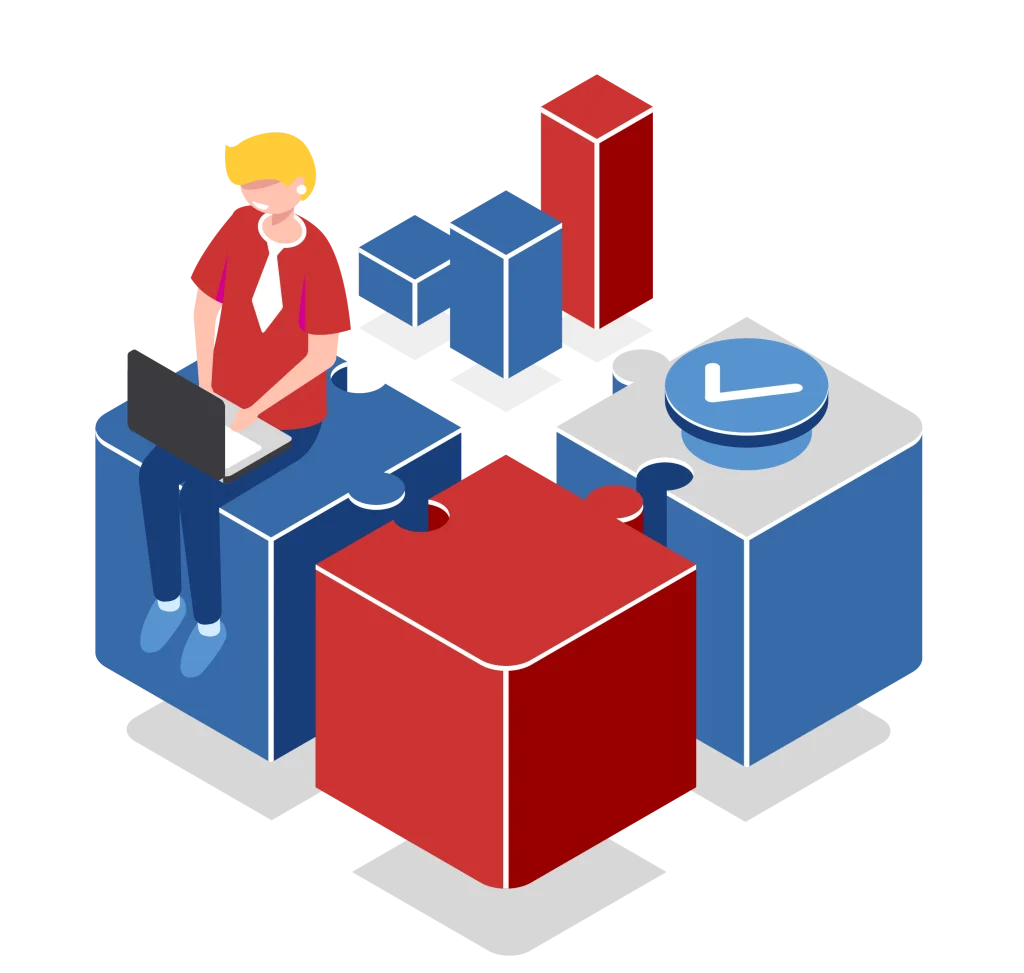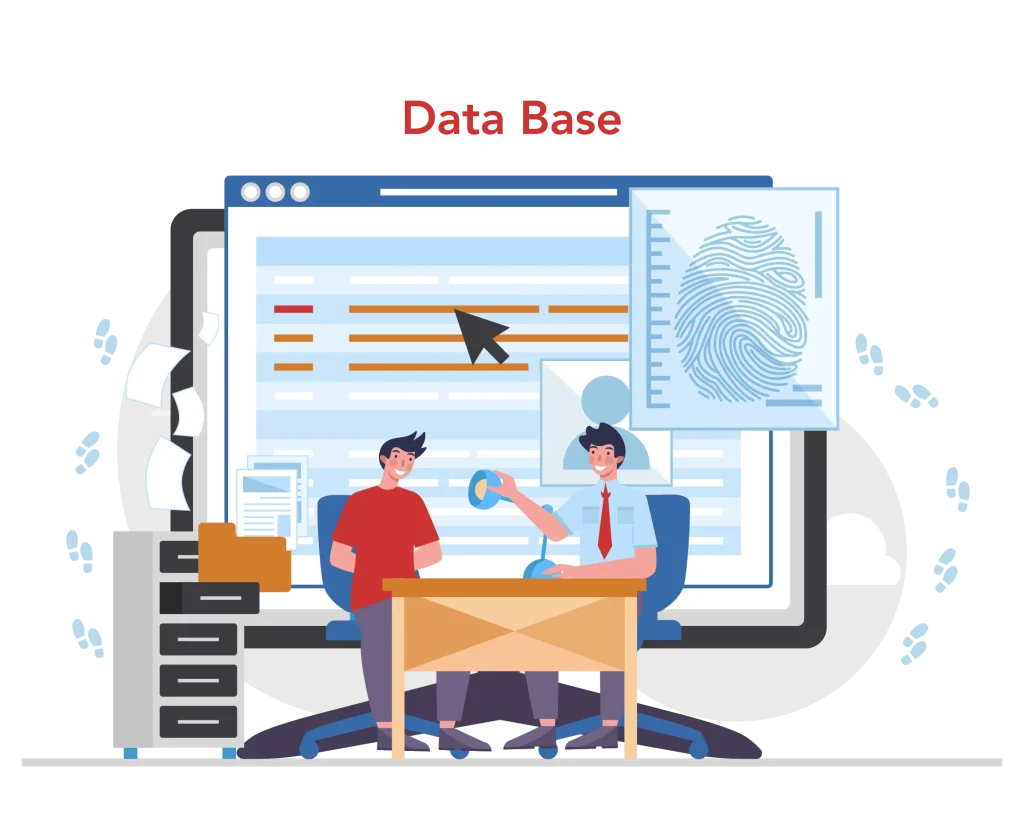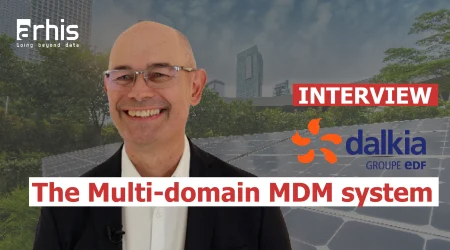TAKE CONTROL OF YOUR MASTER DATA

What is Master Data Management (MDM)?
A Master Data Management (MDM) solution enables you to govern your reference data across different domains: customers, products, structures, employees, classifications, and other value lists.
A holistic and personalized view of your data.
Data connected to all your sources and available everywhere.
Reliable data: Quality, traceability, security, compliance.
Why Reference Data?
As data has become a central asset for businesses, reference data contributes to the overall governance of data by providing a glossary and, more importantly, a view of the company’s activities.
How can we work together if we don’t share the same vocabulary or definitions?
How can we manage or develop a business scope without mastering the objects, relationships, and hierarchies involved?
How can we feed indicators if the attributes they consist of are not the most reliable (mix of recent and valid information)?
The benefits of an MDM solution are numerous:
- Consolidate different versions of the same information.
- Model an activity, buidling objects(for example, a customer from various accounts associated with that customer, a company from its establishments, etc.) with their relationships and/or hierarchical links.
- Provide a transversal and common view of business scopes scattered in silos across dedicated applications, whether within the same domain or across different domains.
- Allow for the consolidation, within a Data Platform, of a business object along with all the data (transactional, behavioral, hierarchical) that belongs to it.
- Construct data entry processes that enable different departments to enrich information related to a customer, an asset, an employee, etc.
- Govern the data: automate data reprocessing according to business rules, engage providers (RNVP, Duns, etc.), or manually manage quality through data stewardship processes.
- Ensure compliance with regulations (GDPR, ESG performance, etc.) through a central point that collects and reconciles all relevant information.
Why Reference Data?
As data has become a central asset for businesses, reference data contributes to the overall governance of data by providing a glossary and, more importantly, a view of the company’s activities.
How can we work together if we don’t share the same vocabulary or definitions?
How can we manage or develop a business scope without mastering the objects, relationships, and hierarchies involved?
How can we feed indicators if the attributes they consist of are not the most reliable (mix of recent and valid information)?
The benefits of an MDM solution are numerous:
- Consolidate different versions of the same information.
- Model an activity, building objects (for example, a customer from various accounts associated with that customer, a company from its establishments, etc.) with their relationships and/or hierarchical links.
- Provide a transversal and common view of business scopes scattered in silos across dedicated applications, whether within the same domain or across different domains.
- Allow for the consolidation, within a Data Platform, of a business object along with all the data (transactional, behavioral, hierarchical) that belongs to it.
- Construct data entry processes that enable different departments to enrich information related to a customer, an asset, an employee, etc.
- Govern the data: automate data reprocessing according to business rules, engage providers (RNVP, Duns, etc.), or manually manage quality through data stewardship processes.
- Ensure compliance with regulations (GDPR, ESG performance, etc.) through a central point that collects and reconciles all relevant information.
The benefits, primarily qualitative, align with strategic ambitions:
- Consolidation of reliable data to enable relevant analyses and support operational and strategic development.
- Optimization of processes to avoid multiple entries while managing data quality and value.
- Better management of customer, supplier, employee relationships, etc.
- Data sharing internally and externally (open data, etc.).
- Traceability and lineage to comply with regulations.
MDM allows for a “Golden Record” vision of reference objects.
This “Golden” vision remains linked to source data and ensures traceability of transformations.
MDM Changes the Game
As a single point of truth, it provides a consolidated 360° view via a fully customizable data model. It automates the integration of heterogeneous sources, ensures the required quality through advanced deduplication mechanisms and complex management rules.
It replaces cumbersome and unreliable manual procedures with simple and secure workflows.
Why choose a Master Data Management (MDM) solution?
- Pre-existing models for customer and product domains, quickly adaptable through simple configuration.
- A library of rules and a Low-code / No-code mode for configuring more specific rules.
- Comprehensive services for enrichment, normalization, existence testing, and data qualification, including calls to specialized providers.
- Integration, "APIsation," and propagation services for a smooth application architecture.
- Specific processes for manual file integration or exporting a given scope.
- Powerful consolidation rules, integrating fuzzy matching and increasingly, AI. They also offer the ability to filter to compare only what is sufficiently qualitative. Finally, clustering processes and marginal treatments are implemented to ensure performance.
- An easily configurable interface with rights management ensuring genuine data access security.
- Workflows, including complex ones, configurable in Low-code.
- Data profiling functions and KPI reporting on data quality as well as MDM functionalities.
WHAT ARE THE MOST VALUABLE DATA FOR YOUR BUSINESS?
Clients and other partners
Reference Data
HR
This view is propagated during the hiring or promotion of a new employee, eliminating duplicates. You can also identify if they are a client, partner, etc.





